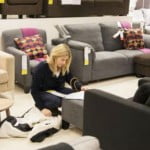
FOR THE beyond few years, the team at MIT Media Lab’s Tangible Media organization has explored thefuture of virtual interfaces with a low-resolution display product of white, plastic pins. It’s an unconventional show—the pins, each of which represents a pixel, are bundled together into an unassuming-looking grid—however it’s capable of actually wonderful things.
The Tangible Media group calls its cutting-edge assignment Materiable. It bears a near resemblance to inform and remodel, MIT projects in which the pins rendered records in 3-D shapes and reacted to human gestures, respectively. however Materiable’s hardware and software program had been altered to duplicate the traits of materials like water, rubber, and clay through mimicking the physical properties of flexibleness, elasticity, and viscosity.
Sensors embedded under the pins sign in how plenty stress is implemented to every pixel, and actuatorsinside the pins manipulate their response to that stress. As a end result, interacting with the display is aconcurrently visible and tactile enjoy, eliciting what the researchers name a “pseudo-haptic impact.”actually placed: Your brain is more likely to perceive a grid of plastic pins as something else entirely if,whilst you flick it, it ripples like a pool of water, or, when pressing against it with your palm, it presses backlike a slab of rubber.
the usage of an interface to mimic the real international is not a brand new concept. as the researchersbe aware in their paper, designers had been simulating real–international homes with GUIs for years. one of the maximum current, and compelling, packages of this concept is cloth design, a visible designlanguage that Google constructed from the ground up, beginning with cutouts of actual creation paper.mild, shadows, and movements that obey the legal guidelines of physics lend fabric layout‘s elements athree-dimensional, nearly-tactile best that could assist customers understand a way to have interactionwith Google’s products. Our familiarity with material residences is useful, even inside the -dimensionalworld, because it facilitates us grok how component are alleged to paintings.
Materiable is a 3-dimensional extension of similar ideas, and hints at how materiality will be used to build a tangible bridge among our digital and physical interfaces. As platforms like virtual and augmented realitypass mainstream, the preference for real, physical interfaces start to make extra sense. As Luke Vink, one of the lead researchers, explains, the metaphors that work inside the digital global gained’t necessarilytranslate to the physical global. A menu on a VR platform, for example, feels much less natural thangenuinely touching the item you’re seeing for your headset. “There’s the pc approach to the manner we dothings and this physical one,” he says. “when you start to combine those worlds you start to get in somemethods very harassed. It’s a completely complex trouble.”










